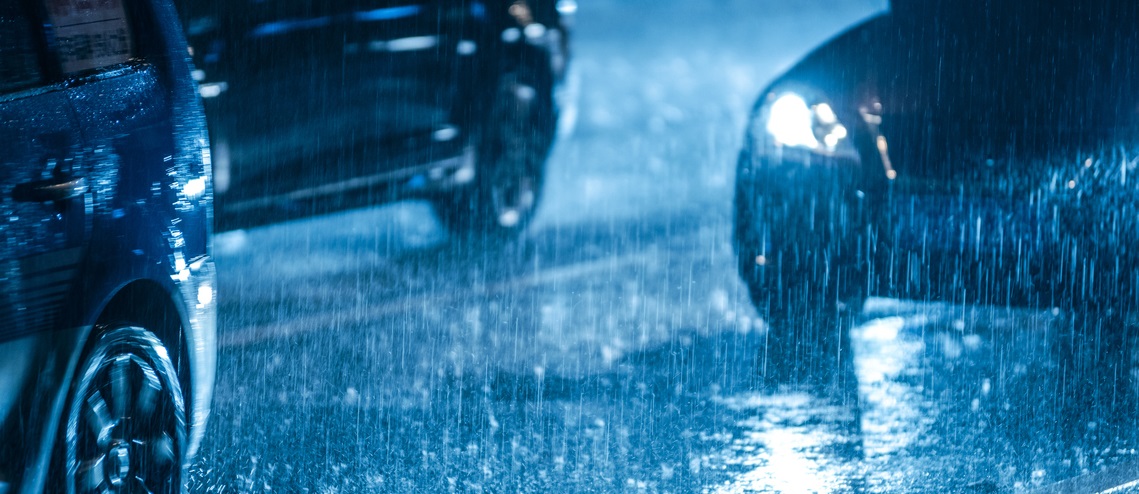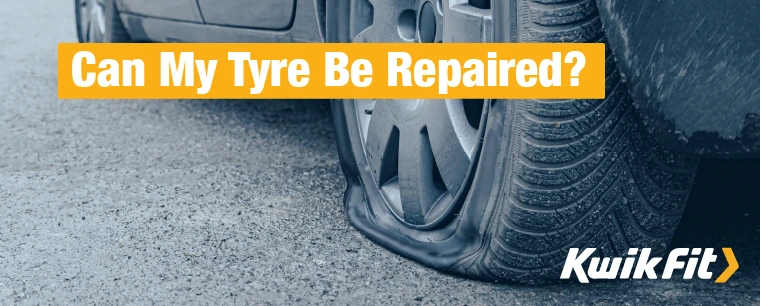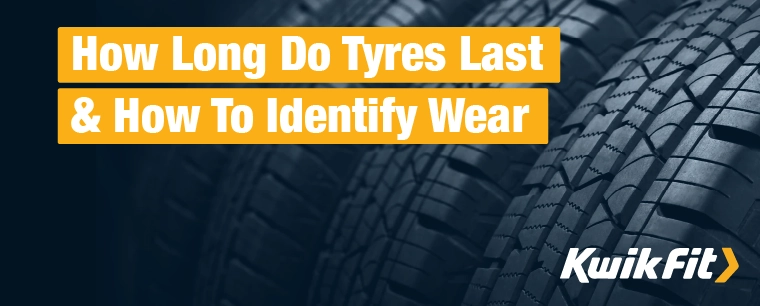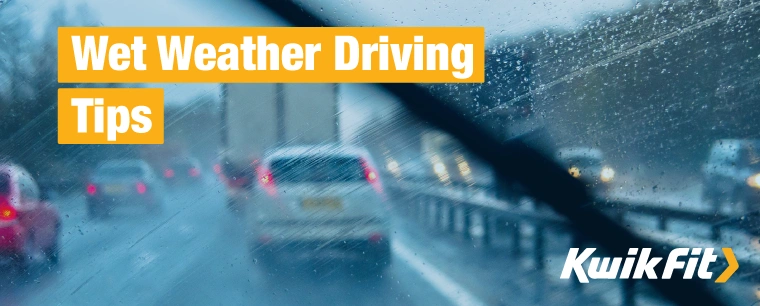Driving in heavy rain: what you need to know
Kwik Fit | Thursday 25th April 2019 10:00am

Driving in heavy rain can be quite scary, especially if a downpour happens unexpectedly. Itís very important not to panic and to practice safe driving techniques suitable for the conditions, otherwise heavy rain could potentially lead to an accident. Very wet weather also leads to higher numbers of breakdowns, but there are things you can do to limit the chances of this happening.
The next time youíre facing rainy conditions on the roads, follow these tips:
Consider whether you really need to make the journey
The best way to avoid the hazards of wet weather driving is not to head out on the roads at all. If you can delay your journey until the rain has cleared, this is a smart decision.
Factor in more time for your journey
A journey in heavy rain is always going to take longer. Check out the route before you go and plan one that avoids roads that are prone to heavy flooding. This may lengthen your journey time, but having to turn back due to an impassable road would add even more time on. Youíll also need to leave additional time to account for congestion and slower traffic. Itís much better to give yourself plenty of time for the trip and expect the worst, rather than put yourself and others at risk by rushing because youíve set off too late.
Give your car a once-over before driving
Before you leave, take a close look at your windscreen wipers. Are they both fully functional at the front and the back? If not, you absolutely shouldnít set off until youíve replaced or repaired them - visibility is everything when driving in heavy rain. Itís also a good idea to give your windows a clean before setting off.
You should also check your tyres. Do they have at least the legal tread depth of 1.6mm? You can check the tread depth by looking closely at the wear indicators in the grooves of the tread pattern, or by using a depth measuring gauge. The more worn your tyre tread, the less grip they will have on the road. Grip is especially important on wet roads. Worn tyres lead to longer stopping distances for your car, as well as a greater risk of aquaplaning at higher speeds.
Take a mobile phone and emergency kit with you
The last thing you want is to be stranded after a weather-related breakdown. Always take your mobile phone with you in case you get into any trouble, along with an emergency kit (including a warm, waterproof jacket, water, snacks and a torch). You may never need it, but itís nice to know itís there.
Reduce your speed
Now that youíre on the road, itís time to think about adjusting your driving habits to suit the conditions. The first and most important thing to do is reduce your speed. It takes longer to stop on slippery road surfaces, so go slower and ensure there is always plenty of space between you and the car ahead of you.
Give spray-creating vehicles more space
Spray (water spraying backwards from vehicle tyres) can cause serious problems with visibility. Your wipers arenít much help, as the spray blocks your view in front of the car. The best option is to avoid spray where you can. Large vehicles like lorries, along with fast vehicles, tend to cause a lot of spray. If you canít avoid driving behind them, giving them much more room will help ensure the spray isnít as bad.
Use headlights carefully
Itís important to make sure other motorists can see you when visibility is poor, but you donít want to dazzle anyone. Use dipped headlights, but avoid rear fog lights as they can be quite dazzling and can even obscure your brake lights.
Keep your AC on to prevent your windows misting up
In humid conditions, your windows can mist up really quickly. When youíre travelling at a relatively fast speed on a motorway in heavy rain, with spray all around you, this can be really frightening. Your visibility could be reduced to nearly nothing, and itís very easy to panic.
If you learn how to quickly and calmly de-mist your windows in such a situation, thereís no need to feel anxious. It only takes a few seconds if you know how. Switch your heater on (with the windscreen setting selected) and slowly increase the temperature, and put the air con on at the same time to keep the atmosphere dry. If your car has a climate control setting, use it. If youíre travelling with someone else, ask them to use the temperature controls so that you can concentrate on the road.
Sit down for puddles and standing water
If youíre approaching a large puddle of standing water, think carefully before you drive through it as it could be too deep. If you arenít sure, canít gauge the depth or there are objects in it that could damage your car, donít take the risk. It could be worth taking another route. If you do drive through, go slowly with the gear low and keep the engine revved up so that you keep momentum through the water. If you go through it too fast, the water may rise up and flood the engine. Pause a second on the other side to let the water wash away.
If thereís standing water on the road, slow right down and stay off the brakes. If you go too fast, your tyres could lose contact with the road - leading to aquaplaning, where your steering suddenly feels very light and odd. If you feel this happening, ease off the accelerator so that your speed reduces and you regain control of your steering. Try to stay calm, and donít hit the brakes.
Breakdowns in the rain
Vehicles break down in the rain for a few reasons. The rain and damp can stop engines and electrical systems working properly, and people driving fast through deep water can flood their engines. If your engine stops operating after such a situation, you should avoid trying to start it again as this can cause further damage. Put your hazards on and call your breakdown service instead. While waiting for assistance, keep the bonnet closed to stop further moisture getting in.
Any facts, figures and prices shown in our blog articles are correct at time of publication.
Featured Articles
Can My Tyre Be Repaired?
Wednesday 22nd November 2023
It can be hard to tell if your puncture can be repaired or not. Read our handy guide to understand if your tyre can be saved or if you need a replacement.
How Long Do Tyres Last & How To Identify Wear
Wednesday 18th October 2023
Driving on old or worn tyres can be dangerous so you need to maintain them properly. Read about how long tyres should last and how to know if your tyres are old.
Wet Weather Driving Tips Ė Staying Safe in the Rain
Thursday 27th October 2022
Driving in the rain isnít only a pain but can be surprisingly hazardous Ė here are our top tips for staying safe in wet & icy weather this winter.







